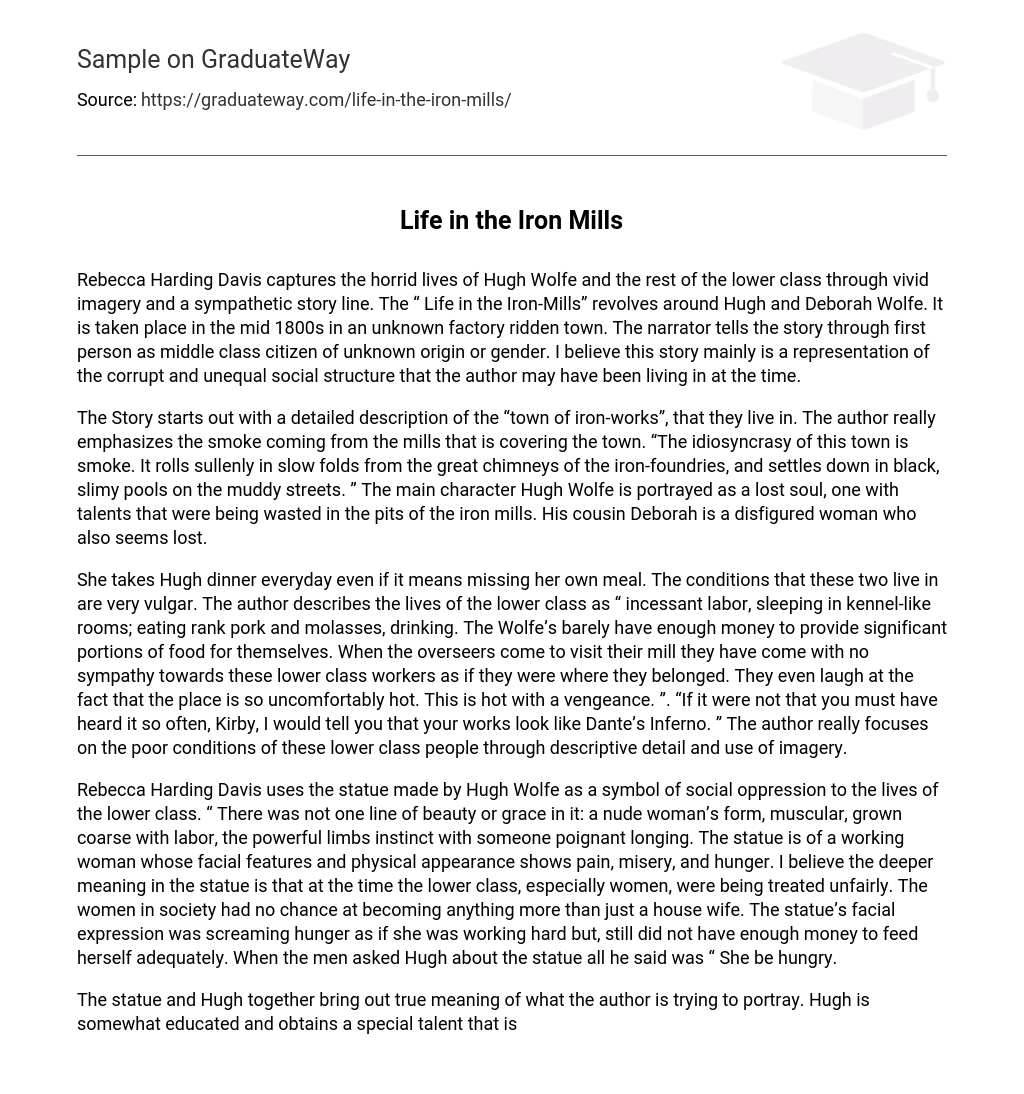Rebecca Harding Davis depicts the deplorable lives of Hugh Wolfe and the lower class with vivid imagery and a sympathetic narrative in “Life in the Iron-Mills”. Set in an anonymous factory town during the 1800s, the story is narrated in first person by a middle-class individual of unspecified background or gender. It is my interpretation that the story primarily serves as a portrayal of the author’s experience in a corrupt and unjust social hierarchy of the era.
The text opens with a detailed depiction of the “town of iron-works” where the characters reside. The author places significant emphasis on the smoke emanating from the mills, which envelops the entire town. It is described as “the idiosyncrasy of this town”, rolling slowly and gloomily from the tall chimneys of the iron-foundries and settling as black, grimy pools on the muddy streets.
The main protagonist, Hugh Wolfe, is portrayed as a forlorn individual, who possesses talents that are being squandered in the depths of the iron mills. Alongside him is his cousin Deborah, a disfigured woman who also appears to be adrift.
Every day, she sacrifices her own meal to provide dinner for Hugh, depicting the vulgar living conditions they endure. The author vividly portrays the lower class’s lives as endless toil, cramped sleeping quarters, and subsisting on low-quality food and drink. The Wolfe family barely has enough money to afford adequate portions of food. When overseers visit their mill, they show no sympathy towards these workers, regarding them as deserving of their circumstances. They even mock the unbearably hot conditions, describing it as a searing inferno comparable to Dante’s works. The author’s focus lies in exposing the poor conditions endured by the lower class, employing detailed descriptions and imagery.
In her work, Rebecca Harding Davis utilizes a statue crafted by Hugh Wolfe to represent the social oppression faced by the lower class. The sculpture, depicting a laboring woman’s nude figure, lacks any semblance of beauty or grace. Instead, its powerful and muscular limbs convey a profound yearning. This statue serves as a powerful symbol of the hardships endured by the working class, particularly women who were subjected to unfair treatment. During this era, women were denied opportunities beyond traditional roles as housewives. The statue’s facial features and physical appearance reflect pain, misery, and hunger. Its expression seems to cry out in hunger, suggesting that despite her strenuous labor, the woman depicted remains unable to secure enough food. When asked about the statue, Hugh merely replies, “She be hungry.”
The statue and Hugh together reveal the true meaning intended by the author. Despite Hugh’s limited education, he possesses a unique talent that remains hidden within the confines of the mills. He uses this talent to sculpt a statue of a working woman. I interpret this as a commentary on the potential of women in society. Like Hugh, they are capable of great things and could be contributing to the world, but instead, they are oppressed and their abilities are wasted. Ultimately, Hugh’s fate mirrors this injustice. He is arrested for theft and spends his remaining days in jail, subjected to hard labor just as he was before.





